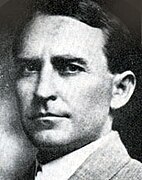| ||||||||||||||||||||||||||||||||||||||||||||||||||||||||||||||
All 435 seats in the United States House of Representatives 218 seats needed for a majority | ||||||||||||||||||||||||||||||||||||||||||||||||||||||||||||||
|---|---|---|---|---|---|---|---|---|---|---|---|---|---|---|---|---|---|---|---|---|---|---|---|---|---|---|---|---|---|---|---|---|---|---|---|---|---|---|---|---|---|---|---|---|---|---|---|---|---|---|---|---|---|---|---|---|---|---|---|---|---|---|
| ||||||||||||||||||||||||||||||||||||||||||||||||||||||||||||||
 | ||||||||||||||||||||||||||||||||||||||||||||||||||||||||||||||
| ||||||||||||||||||||||||||||||||||||||||||||||||||||||||||||||
The 1936 United States House of Representatives elections were elections for the United States House of Representatives to elect members to serve in the 75th United States Congress. They were held for the most part on November 3, 1936, while Maine held theirs on September 14. They coincided with President Franklin D. Roosevelt's landslide re-election. Roosevelt's Democratic Party gained twelve net seats from the Republican Party, bringing them above a three-fourths majority. This was the largest majority since Reconstruction, as the last time a party won so decisively was in 1866.[1] To date, this was the last time that any party held three-quarters of all House seats, as well as the last time that a party won more than 300 House seats.
Significant representation from the Progressives of Wisconsin and Farmer–Labor Party of Minnesota was also seen, as these two liberal populist groups gained a foothold.[2]
The 1936 elections showed the continuing trust of the American people in Roosevelt to guide the nation out of the Great Depression. Despite setbacks, most had faith in the New Deal and elected leaders who supported its measures. This was the last of four straight elections where Republicans lost seats in Congress due to the lingering effects of the Depression.[3]
Cite error: There are <ref group=lower-alpha> tags or {{efn}} templates on this page, but the references will not show without a {{reflist|group=lower-alpha}} template or {{notelist}} template (see the help page).
- ^ "Statistics of the Congressional Election of November 3, 1936" (PDF). February 18, 1998. Retrieved October 5, 2014.
- ^ McCoy, Donald R. (1951). "The Formation of the Wisconsin Progressive Party in 1934". The Historian. 14 (1): 70–90. doi:10.1111/j.1540-6563.1951.tb00127.x. ISSN 0018-2370. JSTOR 24436133.
- ^ "CNN Explains: How today's GOP has its roots in anti-slavery crusade – CNN.com". cnn.com. August 26, 2012. Retrieved October 5, 2014.


